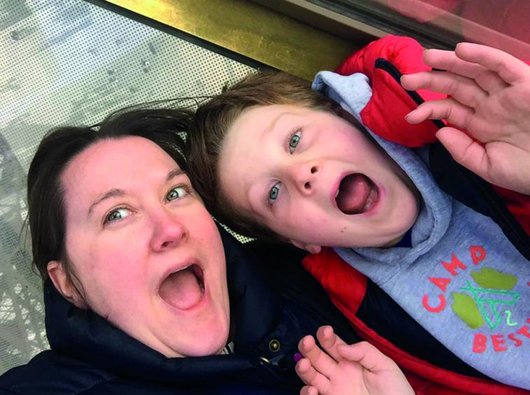Childhood acute myeloid leukaemia (AML) symptoms and tests
There’s a range of symptoms your child may have if they have AML. Symptoms are noticeable changes in the way someone feels.
Tests will show if your child has AML. Tests are also used to monitor the AML throughout treatment.
Common symptoms of childhood AML
A lot of these symptoms can be hard to spot, as they’re similar to the symptoms of other more common illnesses. The important thing is to look out for symptoms that last longer than normal or seem out of the ordinary.
AML affects how your child’s blood cells function, which can cause a number of symptoms. It’s unlikely they’ll get all of the symptoms listed here – everyone is different.
The most common symptoms of childhood AML are:
- anaemia (a lack of red blood cells), which can cause constant tiredness, breathlessness, dizziness, paleness
- unexplained bruising and/or unusual bleeding
- frequent infections.
In black or brown skin, symptoms like paleness and bruising may be less easy to see. Bruises may not show up immediately, but as they develop, they will look darker than the skin around them. Paleness may be more noticeable in the lips, gums, tongue and nail beds. If you pull the lower eyelid down gently, the inside will look pale pink or white rather than red.
Less common symptoms include:
- stomach pain or swelling
- bone pain
- generally feeling unwell
- night sweats
- losing weight
- swollen glands in the neck.
We have more information about the symptoms of childhood leukaemia.
We also have information on infections in blood cancer.
"I wish it were me."
Mum Melody shares her thoughts in the week following Andrew's diagnosis at 3 years old.

Tests for childhood AML
If doctors think your child might have AML, they’ll have tests to confirm whether this is the right diagnosis.
Some tests will be repeated on a regular basis to help doctors monitor the disease, the effect of treatment and your child’s general health.
At any time, you can ask the hospital team to explain why a particular test is being done and what the results mean.
We have more information about tests for childhood leukaemia.
Blood tests can provide doctors with a lot of information about your child’s condition.
- A full blood count measures the number and type of red blood cells, white blood cells and platelets, and shows if there are any leukaemia cells present.
- Flow cytometry analyses the blood as it passes through laser beams, measuring the number and type of cells in the sample.
- Morphology examines the leukaemia cells under the microscope.
Blood cells are made in the bone marrow, so there may be leukaemia cells there even if the blood sample is normal. A bone marrow sample can confirm a diagnosis, show what type of AML your child has and check how well treatment is working.
Using the blood and bone marrow samples they’ve taken, doctors will do a range of tests in the laboratory to look for gene changes in the leukaemia cells. Genes provide a set of instructions to individual cells, and changes in these instructions mean cells don’t behave the way they should. We don’t know why these changes happen – they aren’t passed through families.
Analysing gene changes in the leukaemia cells gives doctors more information about the type of AML your child has and helps them recommend the best treatment.
An MRD test measures how well your child is responding to treatment. It’s done using cells from a bone marrow sample. Your child will have an MRD test when they’re first diagnosed, and at other times during their treatment. It’s a very accurate test that helps doctors decide how much treatment your child will need.
A lumbar puncture is done to look for leukaemia cells in the cerebrospinal fluid (CSF) that surrounds the spinal cord and brain. A sample of CSF is taken using a needle. The aim is to check if there are any leukaemia cells in the CSF, and also to give some chemotherapy into the fluid to prevent the leukaemia cells spreading there.
After your child is diagnosed with AML, they will need more tests to monitor the leukaemia cells, measure their response to treatment and check for possible complications and infections. These tests include:
- liver function test (a blood test)
- urea and electrolytes test (a blood test)
- scans including X-ray, CT, MRI.

Talk to other people affected by blood cancer
Hear from and connect with people who understand.
